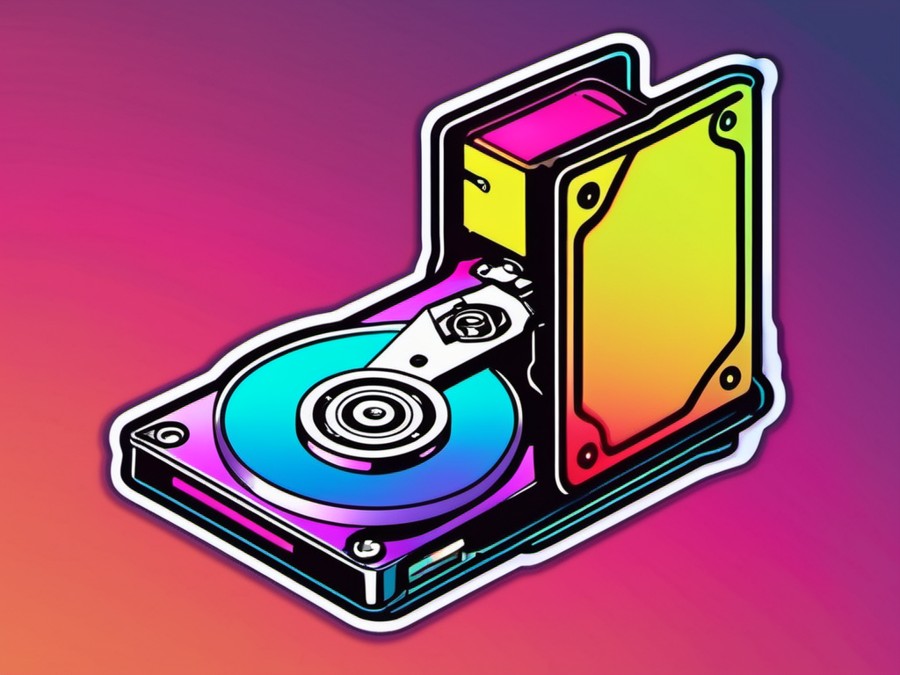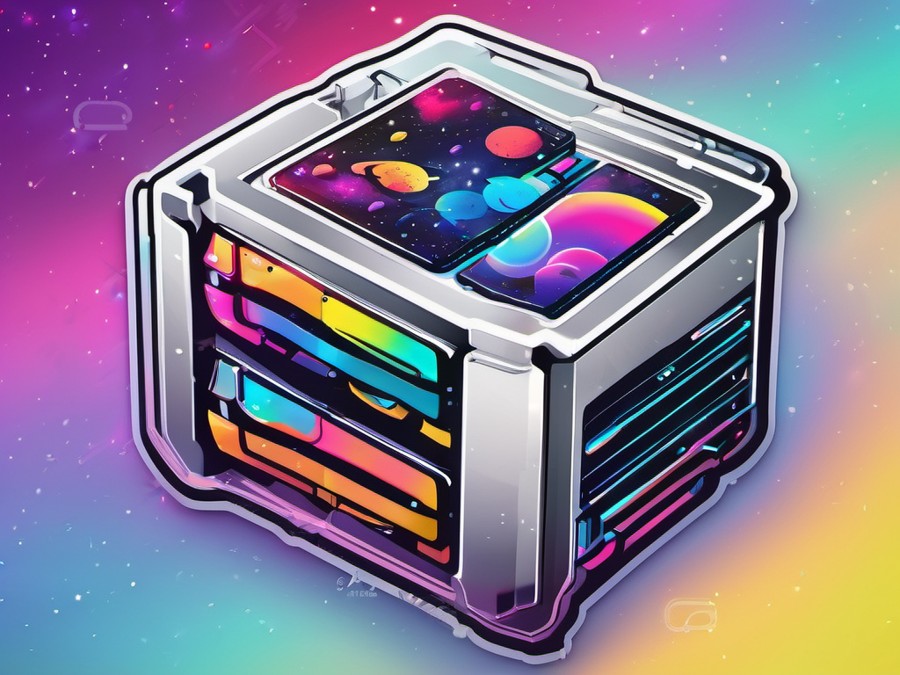· Charlotte Will · Hard Drive Accessories · 7 min read
What is a Hard Drive Enclosure and How Does It Work?
Discover how a hard drive enclosure can transform your internal drives into portable, external storage solutions. Learn about types of enclosures, benefits, common misconceptions, and troubleshooting tips in this comprehensive guide.

Are you looking to upgrade your data storage solutions but don’t know where to start? Hard drive enclosures might be exactly what you need. These versatile devices can transform your internal hard drives into portable, external storage solutions with minimal effort. But what exactly is a hard drive enclosure, and how does it work? Let’s dive in.
Understanding Hard Drive Enclosures
Definition and Common Uses
What is a Hard Drive Enclosure?
A hard drive enclosure, often abbreviated as HDE, is a protective casing designed to house an internal hard drive. It converts the internal drive into an external storage device by providing the necessary interface for connection to another computer or device. Essentially, it’s a bridge between your internal hard drive and the outside world.
Common Scenarios for Using Hard Drive Enclosures
- Upgrading Old Drives: If you have an old, functioning internal drive that you want to reuse, a hard drive enclosure can give it new life.
- Data Backup: Use an HDE to clone your primary drive and create a backup, ensuring you never lose critical data.
- Portable Storage: For professionals who need to carry large files, an HDE with a portable drive can be a lifesaver.
- Server Storage: In data centers, HDEs are used to manage and access numerous hard drives efficiently.
Types of Hard Drive Enclosures
Internal vs. External Enclosures
- Internal Enclosures: Typically used in a tower case, offering high performance and usually supporting multiple drives.
- External Enclosures: Portable and easy to use, perfect for on-the-go data access.
Portable vs. Fixed Enclosures
- Portable Enclosures: Lightweight and compact, designed for mobility.
- Fixed Enclosures: Bulkier but often more robust and suitable for heavy-duty tasks.
Single-Bay vs. Multi-Bay Enclosures
- Single-Bay Enclosures: Houses one drive, ideal for basic use and backup.
- Multi-Bay Enclosures: Can hold multiple drives, often used for RAID configurations and enhanced performance.
How Does a Hard Drive Enclosure Work?
Basic Components and Their Roles
Hard Drive Bay
The core of the enclosure, where you install your hard drive. It ensures the drive is securely in place and protected from physical damage.
Power Supply Unit (PSU)
Provides the necessary power to the hard drive. In external enclosures, this is usually a portable battery or powered through USB.
Interface Ports
These are the connections that allow your drive to communicate with other devices. Common interfaces include USB, Thunderbolt, and sometimes SATA.
Setting Up a Hard Drive Enclosure
Opening the Enclosure
Most enclosures have a simple latch or screw mechanism to open. Once opened, you’ll see the drive bay and connector ports.
Installing the Hard Drive
Insert your hard drive into the bay, ensuring it is correctly aligned with the connector pins. Secure it in place according to the enclosure’s instructions, which may involve screwing it down.
Connecting to a Power Source and Device
Plug in the power cable (if applicable) and connect the data cable to your computer or device. Once powered on, your operating system should recognize the new external drive.
Accessing Data from the Enclosure
Configuring Drive Settings in the OS
Once detected, your OS will prompt you to initialize or format the drive. This step is crucial for ensuring compatibility and optimal performance.
Cloning or Transferring Data
Use software like Acronis True Image or Macrium Reflect to clone your data. This process creates an exact copy of your drive, including the operating system and all installed programs.
Benefits of Using a Hard Drive Enclosure
Increased Portability
Why Portability Matters?
In today’s mobile world, having your data at your fingertips is invaluable. An HDE turns a bulky, desk-bound device into something you can carry in your pocket.
Enhanced Connectivity
Versatile Interface Options (USB, Thunderbolt)
Modern enclosures support a range of connection standards, from USB 3.0 to Thunderbolt 3. This versatility ensures compatibility with various devices, from laptops to gaming consoles.
Simplified Data Management
Cloning and Backup Capabilities
With cloning software, you can create a mirror image of your primary drive. This makes data recovery a breeze and ensures you never lose important files.
Durability and Longevity
Protecting Your Data from Physical Damage
Enclosures shield your hard drive from dust, shock, and other environmental hazards, extending the lifespan of your storage device.
Choosing the Right Hard Drive Enclosure for You
Factors to Consider Before Purchase
Compatibility with Your Hardware
Make sure your drive and host device are compatible. For instance, a SATA internal hard drive will need an enclosure that supports SATA to USB conversion. Read more about SATA internal hard drives for deeper insights.
Desired Features (RAID, Hot-Swap)
Features like RAID configurations and hot-swap capabilities can significantly enhance performance and ease of use. A hard drive dock can offer similar advantages with additional flexibility.
Recommended Hard Drive Enclosures
Best Budget-Friendly Options
For those on a tight budget, options like USB drive enclosures offer good value. Learn more about USB drive enclosures and their benefits.
High-End Professional Enclosures
Professionals may opt for multi-bay enclosures or those with advanced features like RAID support. These are ideal for tasks such as video editing, where speed and reliability are paramount. Check out the best external hard drives for video editing for more recommendations.
Common Misconceptions About Hard Drive Enclosures
Enclosure vs. External Hard Drive
Key Differences and Similarities
While both serve as external storage solutions, an enclosure allows you to repurpose existing drives. External hard drives are pre-built and often more expensive for the same capacity.
Do Hard Drive Enclosures Improve Performance?
Debunking the Myths Around Speed and Performance
Using an enclosure doesn’t inherently improve your drive’s speed. However, connecting it via faster interfaces like USB 3.0 can enhance data transfer rates. Discover the benefits of a USB 3.0 hard drive cable for optimizing your setup.
Troubleshooting Common Issues with Hard Drive Enclosures
Diagnosing Power Supply Problems
Checking the PSU and Cables
If your drive isn’t detected, ensure that the power supply is functioning correctly. Sometimes a simple cable swap can resolve these issues.
Solving Connection Issues
Ensuring Compatibility with Your Device
Compatibility issues can lead to connection problems. Double-check that your enclosure and host device are compatible, especially if using advanced interfaces like Thunderbolt.
Data Recovery from a Faulty Enclosure
Steps to Safely Retrieve Your Data
If your enclosure fails, you can still recover data using a hard drive dock or other direct connection methods. This bypasses the faulty enclosure and allows you to access your data directly.
Conclusion
A hard drive enclosure is a versatile tool that can transform your data storage solutions. Whether you’re aiming for portability, enhanced connectivity, or better data management, an HDE offers numerous benefits. By understanding how they work and selecting the right one for your needs, you can optimize your data storage strategies effectively.
FAQs
Can I use an HDE with a Solid State Drive (SSD)? Yes, many hard drive enclosures support SSDs. Ensure your enclosure is compatible with SATA drives if you’re using a SATA SSD.
What is RAID, and how does it work with hard drive enclosures? RAID (Redundant Array of Independent Disks) is a technology that combines multiple hard drives into one unit for enhanced performance and data redundancy. Some enclosures support RAID configurations, allowing you to set up mirrored or striped arrays.
How do I ensure data safety while using a hard drive enclosure? Regularly back up your data and consider using software that supports real-time data cloning. This ensures that any changes to your files are immediately reflected on the external drive.
Can I use a hard drive enclosure for long-term storage solutions? While HDEs are great for backup and temporary storage, they’re not typically designed for long-term archiving. For that purpose, consider using archival-grade hard drives or cloud storage solutions.
What should I do if my hard drive enclosure becomes inaccessible? First, check all connections and ensure the power supply is functioning. If the drive itself is causing issues, consider using a hard drive dock to bypass the enclosure and access your data directly.




